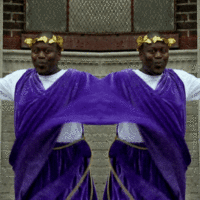Think The Last Supper is just another Jesus painting and don't get the hype?
You best keep those blasphemous thoughts to yourself, because for fine art enthusiasts, movies buffs, literary lovers and religious nuts alike, this painting means so much more.
Leo’s Last Supper is one of the most renowned artworks in the world. Created in the high Renaissance of the late 15th century, it took a lengthy ten years for da Vinci to complete this painting. But then again, he wasn’t exactly known to be a punctual guy. Perhaps it was his ADD that gave Leo such a hard time completing projects on time, but with this painting, yet again, he was behind schedule. Fed up with his procrastination, a monk from the monastery complained to Leo about the delay, to which da Vinci retorted that he was struggling to find a model who could capture the villainous nature of Judas. In a nice little backhanded diss, Leo decided to use the nagging monk for the Judas. Ain’t no one hate on Leo’s style.
On top of taking forever to finish, the painting is also a conservator’s worst nightmare. Due to some unconventional techniques da Vinci utilized, Last Supper began deteriorating almost immediately after it was completed. After only sixty years, the work was considered destroyed due to the vast amount of paint that had flaked off. But the world was not going to give up that easily on this masterpiece. Multiple artists have tried to restore this painting, but this did not go over too well with the public. Upon the second restoration attempt, the French revolutionary anti-clerical troops became so enraged that they threw stones at the panting and scratched out the apostles' eyes. Which we think is a bit of an overreaction.
As bad as that is, the drama doesn’t end there. Realizing that this mural no longer resided in a safe place, a professional fresco remover was hired to dismantle the painting from the wall and move it to a new home. Unfortunately for this man’s reputation, he broke the painting in many places only to realize that the Last Supper is not actually a fresco.
The most recent alterations took place in the late 1970s when Jesus and his friends underwent a twenty-year restoration project. Surprise surprise, when the painting was unveiled in 1999, the public was yet again outraged by how much the colors were enhanced and the faces were altered. It would appear that there is no pleasing the public, so maybe we should just ignore them.
There are few pieces of art in the world that have spurred so much subsequent creativity. This painting is referenced by artists like Dali and Warhol, is found in novels such as The Da Vinci Code by Dan Brown, and has been referenced all over cinema and in TV shows such as the ever relevant Teenage Mutant Ninja Turtles. Not to mention the millions of hits you'll get if you search "last supper parody." So if you're still thinking, "What’s the big whoop?" there might be no hope for you, because based on its turbulent past alone, this artwork is fascinating.





















I chose to comment on this work of art specifically because it is one that I really enjoy not only because I appreciate Da Vinci as an artist, but more because I think this is a very good representation of the Last supper as well as the overall importance that it has for Christians around the world. The use of perspective here is a pure masterpiece, having Jesus at the center thus making him the natural focal point while simultaneously aligning him with the vanishing point where everything else melts together is very impressive. Artists that use linear perspective are aiming to focus the attention of viewers on that specific point while making sure the surrounding details are in harmony with it, and I believe Da Vinci has achieved that with this painting. I appreciate the fact that Da Vinci played with perspective while maintaining a somewhat uniform size for all the elements to show some sort of equal value assigned to each.